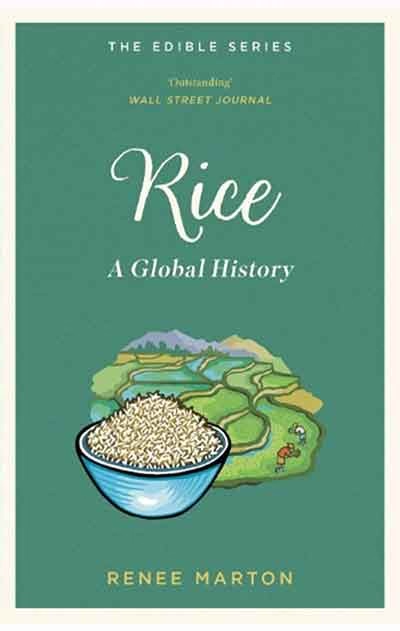Rice has a story that is anything but typical while being one of the most universal meals. “Not even the smartest housewife can cook without rice.” From the earliest paddies to homes and marketplaces worldwide, this humble grain has developed into a dietary mainstay and a pillar of culture. Renee Marton traces the illustrious history of rice through centuries of migration, trade, and culinary invention in this captivating narrative. Some of the rice dishes have traditions dating back to the Mongol dynasty. Imagine that rice is a key component of Budweiser as well.

The book, which is divided into five chapters, examines the gastronomic and cultural significance of rice, the impact of ancient trade on rice, its dissemination in the modern world, and the rise of the modern consumer. Rice rituals and cultural traditions are equally important. Since rice is the first food consumed by the bride and groom, the two are practically synonymous with fertility. Rice examines how rice has influenced cultures and cuisines,inspired art, and supported powerful empires.
Rice is a cereal grass that can thrive in a wide range of conditions. Out of the little more than 700 million tons of rice harvested, 75% is irrigated rice, which makes up 50% of all rice grown. However, irrigated rice has come under considerable scrutiny due to the shifting climate. Both the amount of water and the methane released by irrigated paddy fields are limiting factors. Approximately 120 times as much heat is trapped by methane as by carbon dioxide, making it a more potent greenhouse gas. These are the difficulties that rice will face in the years to come.
It is said that risotto first appeared in Italy in 1754. In order to create a vivid yellow hue, a stained-glass artist on Milan’s Il Duomo added saffron to his glass mix. At a wedding feast, he also used saffron to color the rice and beef marrow as a joke since he liked the outcome, but the guests thought the food was delicious. It was dubbed “risotto alla Milanese.” Short-grain, high-starch rice is cooked in butter or oil to coat the grains with fat in the traditional risotto recipe.
It is said that risotto first appeared in Italy in 1754. In order to create a vivid yellow hue, a stained-glass artist on Milan’s Il Duomo added saffron to his glass mix. At a wedding feast, he also used saffron to color the rice and beef marrow as a joke since he liked the outcome, but the guests thought the food was delicious. It was dubbed “risotto alla Milanese.” Short-grain, high-starch rice is cooked in butter or oil to coat the grains with fat in the traditional risotto recipe.
As rice has evolved from its origins in Asia and West Africa to its current global dominance, Renee Marton examines its impact on society and the food system in this captivating culinary history. For inquisitive readers who like to examine how a single ingredient influences economies, cultures, and identities over time, this book is perfect.
Subscribe to Our Newsletter
Get the latest CounterCurrents updates delivered straight to your inbox.
Shahruk Ahmed Mazumdar is a Writer, Columnist
X/Twitter id: @Shahrukhahmedsk

















































